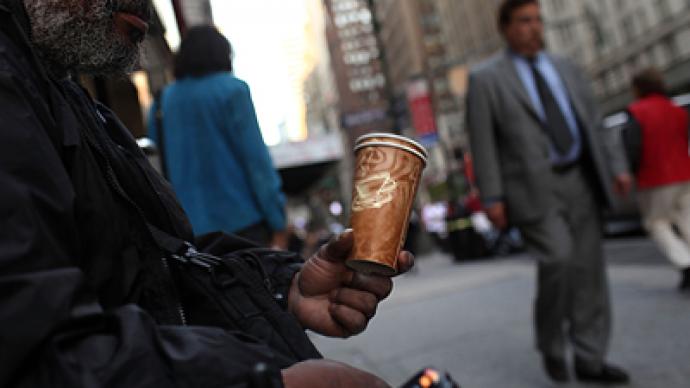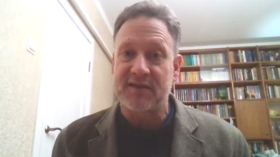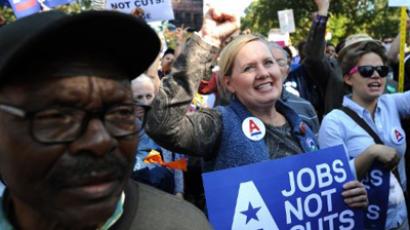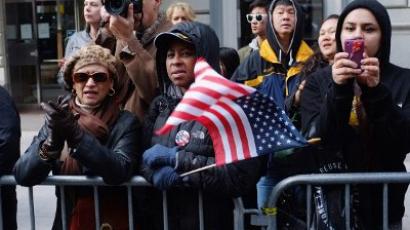US poverty to hit highest level since 1965

Poverty in the US is projected to spread at record levels unseen since the 1960s, affecting many groups including underemployed workers, suburban families and the poorest of America's poor.
As unemployment aid dwindles and workers grow increasingly discouraged, poverty is reaching every corner of the US. In 2010, a family of four with a pre-tax income of $22,314 was considered below the poverty line, while an individual with a pre-tax income of $11,139 would have the same status. The Associated Press surveyed economists, think tanks and nonpartisan academics to estimate the rapidly escalating poverty rate. 2010's poverty rate of 15.1 per cent would only need to increase by 0.1 per cent to surpass what Americans faced in 1965 – but this year, the poverty level is estimated to grow to 15.7 percent.US poverty reached 22.4 per cent in the late 1950s, and steadily declined throughout the 1960’s.“I’m reluctant to say that we’ve gone back to where we were in the 1960s,” said Peter Edelman, director of the Georgetown Center on Poverty, Inequality and Public Policy. “The programs we enacted make a big difference. The problem is that the tidal wave of low-wage jobs is dragging us down and the wage problem is not going to go away anytime soon.”Analysts interviewed by AP estimate that one sixth of the US population – some 47 million people – lived below the poverty line last year. Demographers predict the peak poverty levels to last at least until 2014 “due to expiring unemployment benefits, a jobless rate persistently above 6 per cent and weak wage growth.”“I grew up going to Hawaii every summer,” said Colorado resident Laura Fritz, 27, as she filled out aid forms at a county center. “Now I’m here, applying for assistance because it’s hard to make ends meet. It’s very hard to adjust.”Fritz grew up wealthy until her parents lost most of their money during the housing crisis. While still living in their half-million dollar house, they began to live off of food stamps. Lacking the funds to go to college, the young woman tried joining the army, only to become injured during basic training, she said.With a baby and a boyfriend who can’t find work, Fritz pays rent with her disability checks and his unemployment checks.And as the poverty rate remains at its current level, Americans aged 65 and older will suffer most as they become dependent on their Social Security payments.“I’ve always been the guy who could find a job. Now I’m not,” 56-year old Dale Szymanski told AP. “You keep thinking it’s going to turn around. But I’m stuck.”And the future looks bleak even to US lawmakers. Federal Reserve Chairman Ben Bernanke told the Senate Banking Committee last week that reducing unemployment is “likely to be frustratingly slow.” The chairman predicted that unemployment will still be at 7 per cent or higher by the end of 2014, and that the average increase in new jobs has been shrinking by about 75,000 per month since April.The outlook is dismal, and some American voters have lost faith in politicians to turn the economy around. But the economy remains the number one issue for voters as the 2012 elections approach, and is expected to continue to dominate the debate.














